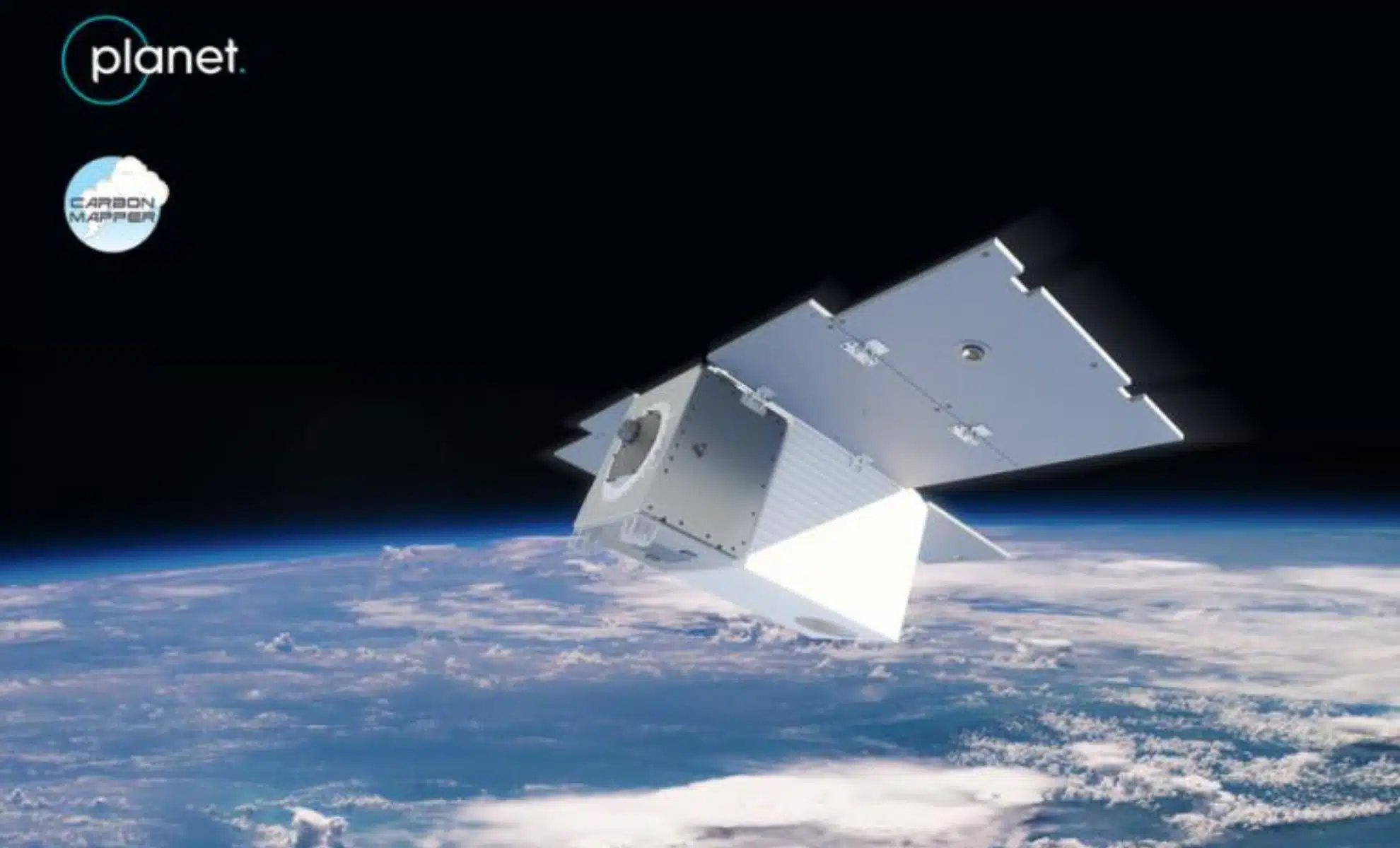
By Lydia Amazouz Published on June 8, 2024 07:30
Collected at : https://dailygalaxy.com/2024/06/planets-first-hyperspectral-satellite/
Planet Labs PBC is on the verge of launching its first hyperspectral satellite, Tanager-1, which represents a major leap forward in the company’s Earth imaging capabilities.
Scheduled for liftoff from Vandenberg Space Force Base as part of the Transporter-11 Rideshare mission by SpaceX, the launch could occur as early as July. The deployment of Tanager-1 marks the beginning of a new era in Earth observation, enabling Planet to provide more detailed and comprehensive data than ever before.
Advanced Imaging Capabilities Hyperspectral Satellite
Tanager-1 is designed to capture data across more than 400 spectral bands, significantly enhancing Planet’s ability to observe the Earth in ways that were previously impossible. Traditional imaging systems capture only the visible spectrum, but hyperspectral imaging includes data from across the visible and shortwave infrared regions. This allows for the detection and analysis of a variety of materials and phenomena that are not visible to the naked eye.

The satellite’s imaging spectrometer, developed at JPL, is one of the most complex optical systems ever launched by Planet. It builds on decades of similar airborne and spaceborne sensor technology, such as the Airborne Visible/Infrared Imaging Spectrometer (AVIRIS) and the Earth Surface Mineral Dust Source Investigation (EMIT).
The data provided by Tanager-1 will support numerous applications. For instance, it will aid in the identification and monitoring of greenhouse gas emissions, providing critical information on methane and carbon dioxide super-emitters. These emissions are major contributors to global warming, and the ability to monitor them accurately is essential for environmental sustainability efforts.
Beyond emissions monitoring, the satellite’s data will be valuable in biodiversity assessments, vegetation analysis, minerals mapping, and water contaminant assessments, making it a versatile tool for both environmental and commercial use.
Commercial and Environmental Impact
The launch of Tanager-1 is a significant step for Planet Labs, both environmentally and commercially. The satellite’s ability to capture detailed hyperspectral data will enable Planet to offer new services and expand its market presence. The information collected by Tanager-1 will be particularly useful for the Carbon Mapper Coalition, a nonprofit organization focused on providing data to help identify and mitigate greenhouse gas emissions. This partnership aims to deliver actionable insights that can inform policy and drive efforts to reduce carbon footprints.
Commercially, there is strong interest in hyperspectral data from various sectors, including agriculture, oil and gas, and government agencies. These industries can use the detailed spectral data to improve their operations, whether it’s through better monitoring of crop health, more precise detection of resource deposits, or enhanced environmental compliance. Despite the high potential, Planet acknowledges that the market for hyperspectral data is still in its nascent stages. However, with the advanced capabilities of Tanager-1, Planet is well-positioned to become a leader in this emerging field.
Financial and Operational Outlook
Planet Labs has recently reported record revenues of $60.4 million for fiscal Q1 2025, marking a 15% year-over-year increase driven primarily by government contracts. This financial growth is expected to continue with the launch of Tanager-1 and the subsequent services it will provide. The satellite’s advanced data collection capabilities are anticipated to enhance Planet’s offerings and drive further revenue growth. The U.S. National Reconnaissance Office has already renewed a contract for Planet’s imagery services and data archive, highlighting the growing demand for high-quality Earth observation data.
In addition to Tanager-1, Planet will launch 35 SuperDoves, which will contribute to its flagship daily global monitoring mission. These satellites, along with Tanager-1, will enhance Planet’s ability to provide continuous and comprehensive views of the Earth, supporting a wide range of applications from defense and intelligence to commercial markets. This comprehensive data collection allows Planet to offer unique insights and predictive analytics, which are invaluable for decision-makers in various industries.
Overall, Planet aims to reach adjusted EBITDA profitability by fiscal Q4 2025. The launch of Tanager-1 is a critical milestone in this plan, as the satellite’s capabilities are expected to attract new customers and expand existing partnerships. The company’s focus on developing advanced imaging technologies and providing high-quality data positions it well for future growth and success in the competitive field of Earth observation.
Expanding Planet’s Fleet
With the successful launch of Tanager-1, Planet is set to expand its fleet of hyperspectral satellites, leveraging its agile aerospace approach to deliver high-resolution and comprehensive Earth observation data. This initiative is part of Planet’s broader strategy to enhance its imaging capabilities and provide more detailed and actionable insights. The launch of Tanager-1 follows the successful deployment of the Pelican-1 technology demonstrator, which shares the same smallsat bus platform.
The integration of advanced imaging technologies in Planet’s fleet underscores its commitment to innovation and excellence in Earth observation. The company’s unique approach combines agile aerospace techniques with cutting-edge imaging technologies, resulting in a robust and versatile satellite constellation. This allows Planet to offer a wide range of services, from daily global monitoring to specialized hyperspectral data collection.
The future of Earth observation looks promising with the addition of Tanager-1 and the planned expansion of Planet’s hyperspectral fleet. As the demand for detailed and accurate Earth observation data continues to grow, Planet is well-positioned to meet this need with its advanced satellite technology and innovative approach to data collection and analysis. The launch of Tanager-1 is just the beginning of a new chapter in Planet’s mission to provide comprehensive and actionable insights for a better understanding of our planet.

Leave a Reply